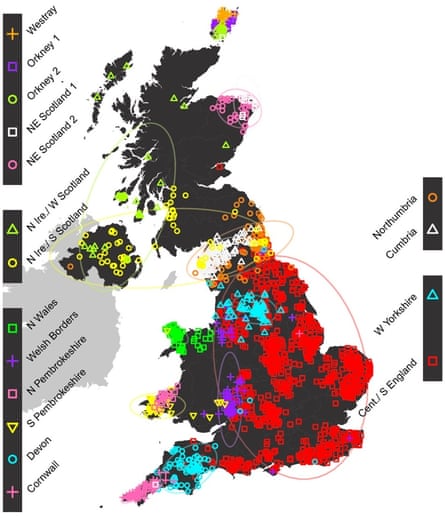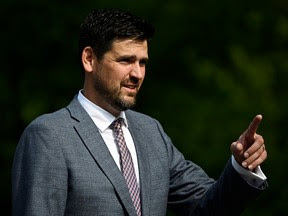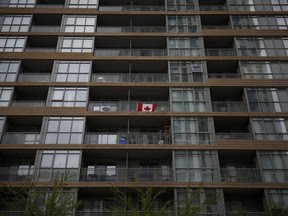
Category Archives: Uncategorized
Genetic study reveals 30% of white British DNA has German ancestry
Analysis over 20 years reveals heavy Anglo-Saxon influence, with French and Danish DNA coming from earlier migrations than the Normans or Vikings
Hannah Devlin science correspondent@hannahdevWed 18 Mar 2015 18.00 GMTLast modified on Wed 14 Feb 2018 21.43 GMT
The Romans, Vikings and Normans may have ruled or invaded the British for hundreds of years, but they left barely a trace on our DNA, the first detailed study of the genetics of British people has revealed.
The analysis shows that the Anglo-Saxons were the only conquering force, around 400-500 AD, to substantially alter the country’s genetic makeup, with most white British people now owing almost 30% of their DNA to the ancestors of modern-day Germans.
People living in southern and central England today typically share about 40% of their DNA with the French, 11% with the Danes and 9% with the Belgians, the study of more than 2,000 people found. The French contribution was not linked to the Norman invasion of 1066, however, but a previously unknown wave of migration to Britain some time after then end of the last Ice Age nearly 10,000 years ago.
Prof Peter Donnelly, director of the Wellcome Trust Centre for Human Genetics at the University of Oxford, who co-led the research, said: “It has long been known that human populations differ genetically, but never before have we been able to observe such exquisite and fascinating detail.”
The study found that people’s ancestral contributions varied considerably across Britain, with people from areas of Wales, Scotland and Northern Ireland emerging as separate genetic clusters, providing a scientific basis to the idea of regional identity for the first time.

Map of the UK showing clustering of individuals based on genetics, and its striking relationship with geography. Photograph: Stephen Leslie/Nature/EuroGeographics
The population of the Orkney Isles was found to be the most genetically distinct, with 25% of DNA coming from Norwegian ancestors who invaded the islands in the 9th century.
The Welsh also showed striking differences to the rest of Britain, and scientists concluded that their DNA most closely resembles that of the earliest hunter-gatherers to have arrived when Britain became habitable again after the Ice Age.
Surprisingly, the study showed no genetic basis for a single “Celtic” group, with people living in Scotland, Northern Ireland, Wales and Cornwall being among the most different form each other genetically.
“The Celtic regions one might have expected to be genetically similar, but they’re among the most different in our study,” said Mark Robinson, an archaeologist from the Oxford University Museum of Natural History and a co-author. “It’s stressing their genetic difference, it’s not saying there aren’t cultural similarities.”
The study, published on Wednesday in the journal Nature, is the culmination of 20 years of work. Scientists began collecting DNA samples from people in Orkney in 1994 and gradually worked across most of the British Isles.
The participants were all white British, lived in rural areas and had four grandparents all born within 50 miles (80km) of each other. Since a quarter of our genome comes from each of our grandparents, the scientists were effectively obtaining a snapshot of British genetics at at the beginning of the 20th century.
Sir Walter Bodmer, of the University of Oxford, who conceived the study, said: “We’re reaching back in time to before most of the mixing of the population, which would fog history.”
The team also looked at data from 6,209 individuals from 10 European countries to reconstruct the contributions their ancestors made to the genetic makeup of the British.
The analysis shows that despite the momentous historical impact on British civilisation of the Roman, Viking and Norman invasions, none of these events did much to alter the basic biological makeup of people living here. The findings support records suggesting that few high ranking Roman officials settled in Britain and that they and their families remained largely segregated from the local Celts.
The Danish Vikings, who ruled over large swathes of Britain from 865AD, are known to have inter-married with locals, but the latest study shows that the conquering force, while powerful, must have comprised relatively few fighters.
“There were very large numbers of people – hundreds of thousands – in those parts of Britain, so to have a substantial impact on genetics there would have to be very large numbers of them,” said Robinson. “The fact that we don’t see that reflects the numbers rather than the relative allure or lack thereof of Scandinavian men to British women.”
The analysis also settles a long-running dispute about the nature of the Anglo-Saxon takeover of England following the collapse of the Roman empire. The replacement of the Celtic language by Anglo-Saxon and the complete shift towards North-West German farming and pottery styles has led some to suggest that local populations must have retreated to Wales or even been wiped out in a genocide.
“[Our results] suggest that at least 20% of the genetic makeup in this area is from Anglo-Saxon migrants, and that there was mixing,” said Robinson. “It is not genocide or complete disappearance of Britons.”
The authors suggest that DNA analysis should now be regarded as a powerful historical tool, sometimes providing more impartial information than traditional sources.
“Historical records, archeology, linguistics – all of those records tell us about the elites. It’s said that history is written by the winners,” said Donnelly. “Genetics complements that and is very different. It tells us what is happening to the masses… the ordinary folk.”
Timeline
9600 BC Last Ice Age ends and land is colonised by hunter-gatherers
2500 BC Influx of settlers from east and western coastal routes
54 BC Julius Caesar invades Britain and defeats the British tribal chief Cassivellaunus
410 AD Collapse of Roman rule in Britain, which descends into the chaos of a failed state
400-500 AD Large influx of Angles and Saxons
600-700 AD Anglo-Saxon rule throughout much of Britain – Welsh kingdoms successfully resist
865 AD Large-scale invasion by Danish Vikings
1066 AD Norman invasion

Posted on August 18, 2023
Canada Tests the Limits of Its Liberal Immigration Strategy
Paul Vieira, Wall Street Journal, August 14, 2023
High levels of immigration made Canada the second-fastest growing developed-world economy in recent years, trailing only the U.S., as it competed to attract high-skilled workers from around the world.
Now, the newcomers are starting to strain the country’s ability to absorb them, putting at risk an important engine of the country’s growth.
The country of 40 million people last year welcomed more than one million permanent and temporary immigrants, Statistics Canada said. That influx generated a population growth of 2.7%; the increase of 1.05 million people was nearly equivalent to last year’s increase in the U.S., a country with more than eight times Canada’s population.
In the next two years, Canadian officials say they will boost the number of permanent newcomers by almost a third, with most being skilled migrants such as carpenters, computer scientists and healthcare workers who qualify under a merit-based points system.
The system, touted by Prime Minister Justin Trudeau’s government but first developed in the 1960s, has helped drive economic growth, attract entrepreneurs and fill vacancies for skilled positions. It has been broadly supported across the Canadian political spectrum, with the goal of attracting the world’s best and brightest to Canada.
But the intake of newcomers is increasing so rapidly that analysts and newly arrived immigrants say it is adding fuel to an overheated housing market, straining a stressed healthcare system and clogging up roads in cities unaccustomed to traffic jams.
The country’s housing prices remain among the highest in the world even after a rapid and hefty rise in interest rates, according to data compiled by the Federal Reserve Bank of Dallas. The price of a Canadian home sits 36% above 2020 levels because residential construction can’t keep up with population growth, analysts say.
TD Bank economists, in a report last month, forecast that based on current demographic trends, the shortfall in housing units that are needed to keep up with projected demand could roughly double to a half-million units within just two years.
Historically, newcomers flocked to major cities such as Toronto, Vancouver and Montreal, but they are now also settling in smaller urban and suburban areas.
The total population of Canada’s capital region, around Ottawa, grew by 8.5% between 2016 to 2021, according to the national census, and house prices there surged 84% in the same period, based on data from the Canadian Real Estate Association. In the Kitchener-Waterloo-Cambridge region, a technology and manufacturing hub 70 miles west of Toronto, the population grew 10% to 575,000. In the 2016-21 period, house prices more than doubled.
As immigration has surged, Canada’s gross domestic product per capita—widely used by economists to measure a country’s standard of living—has declined. National Bank Financial said last month that Canada’s per-capita output is on track to fall 1.7% in the second quarter from a year ago, and the Organization for Economic Cooperation and Development predicts Canada’s GDP-per-capita growth could be one of the lowest among developed-world economies over the next four decades.
Canada’s aggressive immigration “camouflaged the real underlying problem in this country, which is a lack of business investment and productivity,” said David Rosenberg, former chief North American economist at Merrill Lynch and now head of Rosenberg Research. This is showing up in everything from stressed public-transportation, roads, healthcare and housing, he said.
{snip}
FIRST READING: Ottawa could fix housing if it felt like it. They did it before
In the 1970s, Canada decisively tamed a housing shortage via low immigration and an explosion in home-building Author of the article: Tristin Hopper Published Aug 14, 2023 • Last updated 4 days ago • 9 minute read 370 Comments  Newly minted housing minister Sean Fraser, who recently said he will be increasing housing affordability without bringing down real estate prices. The sentences are mutually exclusive. Photo by Justin Tang/The Canadian Press
Newly minted housing minister Sean Fraser, who recently said he will be increasing housing affordability without bringing down real estate prices. The sentences are mutually exclusive. Photo by Justin Tang/The Canadian Press
TOP STORY
Read the conversation Have your say Leave a comment and share your thoughts with our community. Read All 370 Comments
This may be the month that the Trudeau government officially dropped all pretence of caring about fixing the housing crisis.
The Liberals strode into office in 2015 with promises of unlocking home ownership for the middle class. Instead, housing prices under their tenure have nearly doubled, and even in Canada’s mid-sized cities, home ownership is increasingly out of reach for anyone on a median salary.
And just this week, newly minted housing minister Sean Fraser effectively told Canadians to accept these numbers as the new normal. Whatever tack Ottawa is going to take on housing, they will be ensuring that prices stay high. “Our goal is not to decrease the value of their home,” Fraser told Bloomberg News.
But there was a time when Ottawa could look upon a country critically short of homes, and respond not with finger-pointing, but with an all-out construction boom the likes of which Canada had never seen. Affordability surged, rents dropped and analysts soon began to boast that Canadians were “now among the best housed people in the world.”
The prime minister during this long-lost golden age in affordable housing also happened to be named Trudeau. Tragically for the two-thirds of young Canadians who have now officially given up on owning a home like their parents, there’s no real reason Trudeau’s son couldn’t have done much the same thing.
In 1974 — the same year that Pierre Trudeau won a shattering re-election victory — the number of new homes built across Canada reached a level that they’ve never since exceeded. In that year, builders put the finishing touches on 257,243 new Canadian homes.
By comparison, over the last 10 years Canada has averaged just 197,000 annual housing completions — 76 per cent of the 1974 peak.
The contrast is all the more remarkable given that there were only 22.8 million people living in Canada in the mid-1970s. In 1974, one in every 100 Canadians could have purchased a brand-new home, and there still would been several thousand to spare.
And this rate of feverish home-building kept up for quite some time. For the entire 1970s, an average of 229,113 homes were built every single year. In the 43 years since, the 200,000 mark has been cracked only a handful of times.
What’s more, the 1970s were also relatively low-immigration years for Canada. There wasn’t a single year of Pierre Trudeau’s 15-year premiership in which the number of new immigrants was higher than the number of new homes. In 1978, Canada completed 246,533 homes and welcomed just 86,300 new immigrants.
None of the 1970s property boom was by accident. The sheer volume of new homes hitting the market was the end result of a federal government that openly vowed to put its middle and working classes into respectable accommodation — and actually meant it.
“We must … not only improve the operation of private markets in order to accelerate the total output of housing but we must also stimulate the provision of modest accommodation for low-income people,” Liberal MP Robert Andras — a perennial Pierre Trudeau cabinet member — declared in 1969.
Poverty had been on the upswing throughout the 1960s, and the solution pitched by the Liberal government was to throw up whole cities of new homes practically overnight, so that these growing ranks of Canadian poor would at least have a place to live.
In the 1970s, the housing-assistance activities of the Canadian Mortgage and Housing Corporation “exploded,” according to one history of the era.
A latticework of loan guarantees, tax credits and direct subsidies emerged to put millions of Canadians within reach of home ownership, and the construction market roared into high gear to meet the new demand.
Meanwhile, the Canada Rental Supply Program extended interest-free loans to developers who built social housing, and a firehose of federal monies was directed at subsidized housing projects.
“In the heyday of Canadian social housing from 1965 to 1990, 10 percent of total housing production was non-profit, public or co-operative,” wrote housing analyst Greg Suttor in a 2017 profile of this period.
That was enough affordable homes to “house half the lowest-income segment of the roughly 170,000 households added in Canada each year,” noted Suttor.
And rather than city cores increasingly becoming conclaves of the rich, the 1970s saw a flourishing of low-income options opening up “in the same neighbourhoods as middle-class Canadians lived in.”
When the Canadian government spoke of housing policy in the 1980s, it was framed as an unvarnished national triumph that stood as an example to the world.
“We have tripled our housing stock and rehabilitated the best of our older dwellings. Canadians are now among the best housed people in the world,” read a 1987 report issued by then housing minister Stewart McInnes.
It was basically the polar opposite of the situation now. The yearly output of new Canadian homes has now been stagnant for at least 20 years. In 2002, housing completions stood at 185,626. In 2019, the last full year before the COVID-19 pandemic, they stood at a near-identical 187,177.
At the same time, the number of Canadians needing homes is reaching meteoric highs. In 2022 alone, Canada registered one million new immigrants against 219,942 new home completions.
It’s now been a full 24 years since Canada has come close to marking a year that, like the 1970s, saw the number of new homes outpace the number of new immigrants.
A recent TD report forecast that if these trends continue, Canada’s housing shortfall will grow by another 500,000 units in just two years. “Greater thought and estimation needs to occur on what’s a true absorption rate for population growth,” cautioned the writers.
The cause of the Canadian housing affordability crisis has always been pretty simple: There are too few homes.
There are ways to tweak this by banning foreign investment or raising interest rates. But if immigration is going to stay at historic highs (and the Trudeau government has indicated that it might climb even higher); home prices aren’t going to be returning anywhere near normalcy until Canada can start building way more homes, way faster.
Even before recent immigration spikes, Canada already had the greatest structural housing deficit in the G7. According to a Scotiabank estimate from 2021, it would require an extra 1.8 million homes just to reach an affordability rate on par with the rest of the G7.
At current home building rates, even if the Canadian population stayed put it would take nine years just to make up the gap.
There’s no real reason that Canada couldn’t pull out all the stops to re-enact the 1970s building boom — although there are a few major barriers in the way.
For one, much of the low-hanging fruit is gone.
Nowadays, any significant expansion of the Canadian housing stock would likely require a fair bit of “intensification”: Turning single-family homes into four-plexes, building apartment buildings in the suburbs and remaking infrastructure to handle denser cityscapes. But in the 1970s, even in Canada’s largest cities, expanding the housing supply was usually just a matter of greenlighting some more subdivisions.
In 1977 Vancouver, single-family homes were so plentiful that it was still possible to buy one for the modern equivalent of only $375,000. In Toronto, when the 56-storey TD Bank Tower first opened in the middle of the city’s financial district in 1967, the city’s density was so low that its next-door neighbour was a surface-level parking lot.
“We can’t easily sprawl our way out of this,” said Steve Lafleur, a public policy analyst who writes often on the subject of housing affordability. Fifty years ago, builders could still “plop down a subdivision a 20-minute drive from the heart of the national economy,” said Lafleur.
But if there’s one glaring roadblock preventing Canada from pursuing a second all-out building boom, it’s the fact that today’s municipalities are way more obstinate than their 1970s predecessors. Restrictive zoning laws and other thickets of municipal red tape have largely kneecapped any ability of developers to build with the feverish intensity of the 1970s.
In the 1970s, said Lafleur, “the feds were serious about expanding affordable rental options and the municipalities didn’t really get in the way.”
Cities didn’t get in the way of any new development, really. “The image of rapid growth in … major urban centres was widely accepted in the late 1960s and early 1970s,” read a 1975 report by the Science Council of Canada. Vancouver in the late 1960s and early 1970s was so uncompromisingly pro-development that there exist images of its mayor riding a wrecking ball.
The federal government of 2023 is again willing to drop billions on affordable housing, albeit at much lower rates than the Pierre Trudeau government. But even that “won’t move the needle because municipalities aren’t willing to accommodate enough growth,” said Lafleur.
Nowadays, whenever the feds greenlight a new package of demand-side measures to put more money into the housing market, it doesn’t spur construction — it mostly just bids up prices even worse.
The easiest way out of this impasse is simply to steamroll municipal power, and there have indeed been recent moves in that direction. B.C. and Ontario have both introduced legislation that would essentially ban cities from restricting lots to single-family homes.
And Conservative Leader Pierre Poilievre is now pitching a housing program that would shut off federal money to cities that doesn’t meet federal homebuilding targets: In essence, defunding any city council with overly NIMBYist tendencies.
In 1974, Canada built an average of 704 new homes every single day. Notably, that’s almost exactly the same number by which the current housing shortage is getting worse. If TD’s estimates of a 500,000-unit shortfall over the next two years hold true, that’s another 685 units added to the shortfall each day.
Whatever’s going to fix this, it will need to be big. As for the measures now being pitched to increase densification: “It’s too little, too late,” said Lafleur.
Red Chinese Election Meddling Continues
Government reveals new alleged Chinese-backed misinformation campaign against Conservative MP Michael Chong
‘Most of the activity centred on spreading false narratives about his identity,’ government said in statement about social media campaign Author of the article: Ryan Tumilty Published Aug 09, 2023 •

OTTAWA — Conservative MP Michael Chong has once again become a target of what the federal government suspects is a targeted misinformation campaign backed by China.
Global Affairs Canada’s Rapid Response Mechanism, a program the government set up to track misinformation, identified the campaign against Chong happening on the social media app WeChat between May 4 and May 13, during recent federal byelection races. The byelections did not involve Chong directly, but his Conservative party did compete.
Global Affairs found a network of accounts spreading false or misleading information about Chong. It found a third of the accounts likely have some link to the Chinese government, while two-thirds of the accounts were anonymous and had not previously promoted news stories about Canadian politics.
The accounts also seemed to be co-ordinated, pushing the information out at roughly the same time, increasing the chance that WeChat users would see it.
“Most of the activity centred on spreading false narratives about his identity, including commentary and claims about his background, political stances and family heritage,” according to a statement from the government.
Chong released a statement and said this is a troubling incident and the Liberals should be calling an inquiry into foreign interference.
“This is another serious example of the communist government in Beijing attempting to interfere in our democracy by targeting elected officials,” he said.
Chong has been an outspoken critic of the Chinese communist government in Beijing. He pushed for Parliament to adopt a resolution describing the treatment of Uyghurs as a genocide. Earlier this year, it was revealed CSIS had information that the Chinese government was collecting information about Chong’s family in Hong Kong, which was not initially shared with him
Chong has also said he has informed CSIS about direct threats he has received that he believes are from the Chinese government.
Chong said he appreciates the government informing him promptly this time, instead of waiting two years as it did when he was last targeted. He said the government needs to address all of these issues more quickly.
“The Trudeau government has failed to take several important actions to protect Canadians and our democracy. They have failed to introduce a foreign influence registry for those being paid to act on behalf of hostile foreign governments. They have failed to give our intelligence and law enforcement agencies the resources and tools they need to do their jobs.”
Chong also advocated for the government to expel Zhao Wei, a Chinese diplomat accused of being involved in the operation targeting his family. The government eventually expelled Zhao in May, after months of calls from the opposition, including Chong, to take that step.
Chong said the government should be taking a closer look at other Chinese officials in Canada.
Stephanie Carvin, a former national security analyst with the Canadian government now a professor at Carleton University, said it’s possible Chong was targeted, despite not being a candidate in the byelections because China doesn’t have a good grasp of how Canadian democracy works. It could also be that this was simply a trial run by Beijing for a bigger election campaign, she said.
“We do know that states that do online foreign interference; like Russia, like Iran, like China, absolutely experiment and practice before they do larger-scale things,” she said.
In its statement, the government also noted that the actions targeting Chong would appear to be a violation of WeChat’s own terms of service, but it detected no indication WeChat took any steps to do anything.
WeChat was developed by a Chinese software company and is wildly popular in China where it operates under the name Weixin.
Maxime Bernier is Right in Denouncing Trudeau’s Cult of Diversity: It’s a Form of Genocide Against Canada’s Founding/Settler People Wrapped in Woke Lies
Maxime Bernier, leader of the People’s Party of Canada, is right in denouncing Trudeau’s cult of diversity and extreme multiculturalism. It is a form of genocide against Canadians wrapped in wrapped in woke lies.

Exactly five years ago, I denounced Trudeau’s cult of diversity and extreme multiculturalism in six tweets that caused general consternation in the media and political class.
My then leader Andrew Scheer and some of my Conservative colleagues publicly denounced me. A few days later, I resigned from that party. Weeks later, I announced the launch of the PPC.
It’s more important than ever that we have this debate about the future of our country, as Trudeau is implementing his mass immigration plan that is destroying Canada’s identity, economy, social cohesion, and way of life.
As you can see below, my tweets were absolutely sensible and on the mark, despite the hysteria that greeted them.
1/ Trudeau keeps pushing his “diversity is our strength” slogan. Yes, Canada is a huge and diverse country. This diversity is part of us and should be celebrated. But where do we draw the line?
2/ Ethnic, religious, linguistic, sexual and other minorities were unjustly repressed in the past. We’ve done a lot to redress those injustices and give everyone equal rights. Canada is today one of the countries where people have the most freedom to express their identity.
3/ But why should we promote ever more diversity? If anything and everything is Canadian, does being Canadian mean something? Shouldn’t we emphasize our cultural traditions, what we have built and have in common, what makes us different from other cultures and societies?
4/ Having people live among us who reject basic Western values such as freedom, equality, tolerance and openness doesn’t make us strong. People who refuse to integrate into our society and want to live apart in their ghetto don’t make our society strong.
5/ Trudeau’s extreme multiculturalism and cult of diversity will divide us into little tribes that have less and less in common, apart from their dependence on government in Ottawa. These tribes become political clienteles to be bought with taxpayers $ and special privileges.
6/ Cultural balkanisation brings distrust, social conflict, and potentially violence, as we are seeing everywhere. It’s time we reverse this trend before the situation gets worse. More diversity will not be our strength, it will destroy what has made us such a great country.
Canada’s Housing Crisis — It’s Immigration, Stupid!
National Post (August 11, 2023) below lays out all the figures. The cause of Canada’s horrific housing crisis and the lack of affordability is not some deep mystery. It’s Trudeau’s invasion level immigration intake, now approaching half a million a year — that’s a city almost the size of Hamilton, Ontario (537,000) EVERY year. But that’s not all. Almost another half million foreign bodies — international students and temporary (often not so temporary) foreign workers need rental housing. Yet, Trudeau pal, Marc Miller, the new Immigration Minister shows no sign of reducing the numbers, even in face of the housing shortage. The Bible (Proverbs 26:11) notes: “As a dog returneth to his vomit, so the fool returns to his folly.” CIC News (August 9. 2023) reported: ” “I don’t see a world in which we lower [immigration targets], the need is too great … whether we revise them upwards or not is something that I have to look at but certainly, I don’t think [we will] lower them.” According to Miller, immigration is not the reason that Canada is facing housing supply challenges across the country. Therefore, Miller takes issue with the fact that immigrants are often blamed for taking away homes from Canadians and causing housing inflation”. Ontario Premier Ford, in the midst of a scandal for selling off portions of the Province’s Green Space for housing, pleaded that Ontario will grow by adding the size of two Torontos — roughly 5.4-million people — in the next decade, almost all immigrants. Yet, foolish Ford does not blame the federal government’s immigration policies — Paul Fromm
Foreign student surge adds to housing crisis
- National Post
- 11 Aug 2023
- Bryan Passifiume
PETER J THOMPSON / NATIONAL POST FILESFor many international students, coming to Canada means fighting a tight entry-level rental market.
Record numbers of international students coming to Canada is making the already inflated cost of housing worse, said Steve Pomeroy, a policy research consultant and senior research fellow at Carleton University’s centre for urban research.
The biggest strain on Canada’s housing market, he said, isn’t only the rising rate of permanent residents, with more than 400,000 permanent residents in 2022, and the Liberal government determined to hit 500,000 a year in the next couple of years. Those coming here seeking temporary residence, either temporary foreign workers or international students, are fuelling rental price increases.
“Temporary foreign workers and students are going to be renters, as opposed to owners,” he said.
Average rents nationally jumped more than 10 per cent last year and are expected to rise again this year, although rents in hotter markets, such as Toronto and Vancouver, are up significantly more.
Data released earlier this year by Immigration, Refugees and Citizenship Canada (IRCC) show 807,750 international students with valid student visas studying at Canadian post-secondary institutions as of the end of 2022.
At 30 per cent higher than the 617,315 students in 2021, it’s now at the highest level it’s ever been.
With the exception of 2020, where numbers were impacted by the COVID-19 pandemic, Canada’s complement of international students historically saw between six to nine per cent growth annually.
Pomeroy said universities are driving the numbers as a way to generate more revenue, because they can charge international students much higher tuitions.
“In Ontario, university tuition fees are frozen, grants are frozen, but the only variable that universities have to generate new revenues is international students, so they naturally go and chase those,” he said.
More visiting students, he said, create inordinate demand at the very bottom of the rental market, where there’s already a tight market for low-income workers, fixed-income seniors and those who rely on social assistance.
Benjie Rustia, an official with an international immigration and study agency located near the Philippine capital of Manila, said his international-student clients know that coming here means fighting
fighting a tight entry level rental market.
“They are well informed by their relatives or friends in Canada,” he told the National Post.
“Making informed decisions is the basic aspect for the process for international students, and are based on thorough research and understanding.”
Late last month, news of an international student from India found living under an east Toronto bridge brought attention to the problem, and highlighted concerns from advocates that Canada’s affordability crisis is rendering increasing numbers of foreign students homeless.
Most international students coming to Canada flock to Ontario, which in 2022 saw more than 411,000 foreign students enrolled in the province’s post-secondary institutions.
British Columbia ranked second with 164,000 students last year, followed by Quebec with 93,000, Alberta with 43,000 and Manitoba with 22,000.
While India’s 319,130 international students rank as Canada’s biggest cohort, followed by China with 100,075, the Philippines is seeing big bumps in the number of their students coming here.
Canada issued 25,295 study permits to Filipino students to study here in 2022, a 76 per cent increase from the 14,355 visas issued to students from that country in 2021.
As of June 2023, 11,400 permits were issued to students from the Philippines.
Rustia said his clients typically search for schools that offer on-campus residence living or look for schools near where they can stay with friends and relatives already in the area.
News reports on Wednesday described long wait-lists for on-campus housing at Calgary universities, with 740 students waiting for housing at the University of Calgary, and the city’s Mount Royal University establishing a waiting list for their 950 dorm rooms for the first time in the school’s history.
Solving this problem, Pomeroy said, could be done by striking partnerships between schools, governments and developers.
“If the government was smart, it would say ‘OK, we’re causing the problem by giving out these visas to international students, how can we solve this problem,’” he said.
“Let’s work with the universities, let’s work with the private developers for some incentives and stimulus.”
He suggested using existing programs, such as the Canada Mortgage and Housing Corporation’s rental construction financing initiative — which provides low-cost loans to encourage rental apartment projects — to encourage student-centred rental construction to keep the pressure off local residential rental markets.
A statement to the National Post from Universities Canada, a post-secondary institution lobby group, agreed the federal government should be doing more to address the issue.
“Solving the housing crisis will require collaboration among all levels of government, and universities remain willing partners in these efforts,” wrote interim president Philip Landon.
Canada’s universities, he wrote, are doing more to approve and build more on-campus housing, as well as provide resources to help students access off-campus living space, as well as developing “innovative housing models” to relieve local rental market pressures.
Emails to Immigration Minister Marc Miller went unacknowledged.
Tom Kmiec, the Conservative party’s immigration and citizenship critic, said that the current government’s housing and immigration policies are leaving newcomers on the streets.
“More homes were being built in 1972 when Canada’s population was half of what it is today,” he said in a statement.
“The Liberal government has failed to deliver on their housing promises and failed to come anywhere close to building the number of houses we need, leaving Canada short millions of homes and Canadians struggling to afford a place to live.”
a tight entry level rental market.
“They are well informed by their relatives or friends in Canada,” he told the National Post.
“Making informed decisions is the basic aspect for the process for international students, and are based on thorough research and understanding.”
Late last month, news of an international student from India found living under an east Toronto bridge brought attention to the problem, and highlighted concerns from advocates that Canada’s affordability crisis is rendering increasing numbers of foreign students homeless.


 A Canadian flag on a condo balcony in Toronto. The city suffers from health-care shortages and unaffordable housing prices. Photo by Cole Burston/Bloomberg
A Canadian flag on a condo balcony in Toronto. The city suffers from health-care shortages and unaffordable housing prices. Photo by Cole Burston/Bloomberg